Smart Link of the Day
Posted on: April 7th, 2015 by Waterloo Region Crime Prevention Council
Back in February 2015, the Church Council on Justice and Corrections (CCJC), released a very promising evaluation report on the Circles of Support and Accountability (CoSA) program that operates across Canada. CoSA is a “community-based reintegration program, grounded in restorative justice principles, that holds sex offenders accountable for the harm they have caused while assisting with their task of re-entry into communities at the end of their sentences”.
The evaluation, the first of its kind in Canada, gives an in depth description of how the program works, documenting it’s success rate and cost savings due to reduced recidivism and reoffending. In short, the evaluation says that this program works.
Great news!
But then, on March 2nd 2015, it was announced that as of March 31, 2015, Correctional Services Canada (CSC) would not renew the funding it has been providing since 1996, as a partner to CoSA. The program has additional partners in numerous Canadian cities such as the Mennonite Central Committee Ontario (MCCO) for the program operated in Kitchener, Hamilton and Toronto. MCCO has funding from CSC until March 31, 2018.
CoSA Canada quickly released a statement to clarify and restate the real impacts of this program: a proven model that addresses a high risk crime against vulnerable people in a humane and accountable way and shows that it can reduce recidivism of the highest risk sexual offenders by 70 – 83%.
This is what we at the Crime Prevention Council would be inclined to call a “smart on crime” approach to reducing crime and victimization:
- the program is based in good evidence,
- the approach is measured and documented in similar ways across programs,
- it has produced excellent results,
- it is proven to reduce and prevent further crimes at a lower cost than keeping an individual incarcerated for “life”, and,
- helps to reintegrate individuals into our community, which is where 95% of people exiting prison, including those convicted of sexual offenses, will return eventually at the end of their sentences
Meanwhile, this ‘made in Canada’ approach has been successfully exported to a number of jurisdictions in the U.S. and the U.K., in addition to France, The Netherlands, Italy, Australia, New Zealand, Latvia and South Korea.
When programs show that they accomplish what they set out to do at comparatively low investment and provide a high return on investment to the safety of our community, their sustainability is not only vital, but smart and it makes so much more sense to support of them rather than cut them.
As such, the decision by CSC to cut funding for CoSA is tough to understand and needs further dialogue and consideration.
Posted on: December 30th, 2014 by Waterloo Region Crime Prevention Council
We’ve been in reflection mode this week at the WRCPC office. The time of year lends itself perfectly to this kind of ‘look back’ at the year that was 2014. I hope you are enjoying your own reflections. And, since we’re at it, why don’t we do some reflecting together, with the help of Smart on Crime.
We had such a variety of blog posts this year, ranging from what we were reading to crime stats, to special posts from Friends of Crime Prevention. Early in 2014, we wrapped up a year long examination of the root causes of crime. With the end of inREACH in Waterloo Region, we took some time to share what our community has learned from inREACH and engage our community in a follow up event in April where planned next steps. We even introduced you to some new words to enrich your vocabulary! And of course, we couldn’t help but challenge our community with some harder hitting posts.
Our readers are as diverse as our blog posts, which would explain the diversity of popular blogs this year. Here’s the round up of our top 14 posts from 2014.
- Public Opinion & Crime – Anthony Piscitelli
“Since 2006 the Canadian government has focused on being tough on crime. The policy approach continues to this day but it seems the Canadian public is starting to see these changes as a policy excess. Instead of focusing on punishment, public opinion polls suggest the government focus should be on prevention through education and social development programs.”
- Trent’s Trajectory: The dollars and $ense of crime prevention
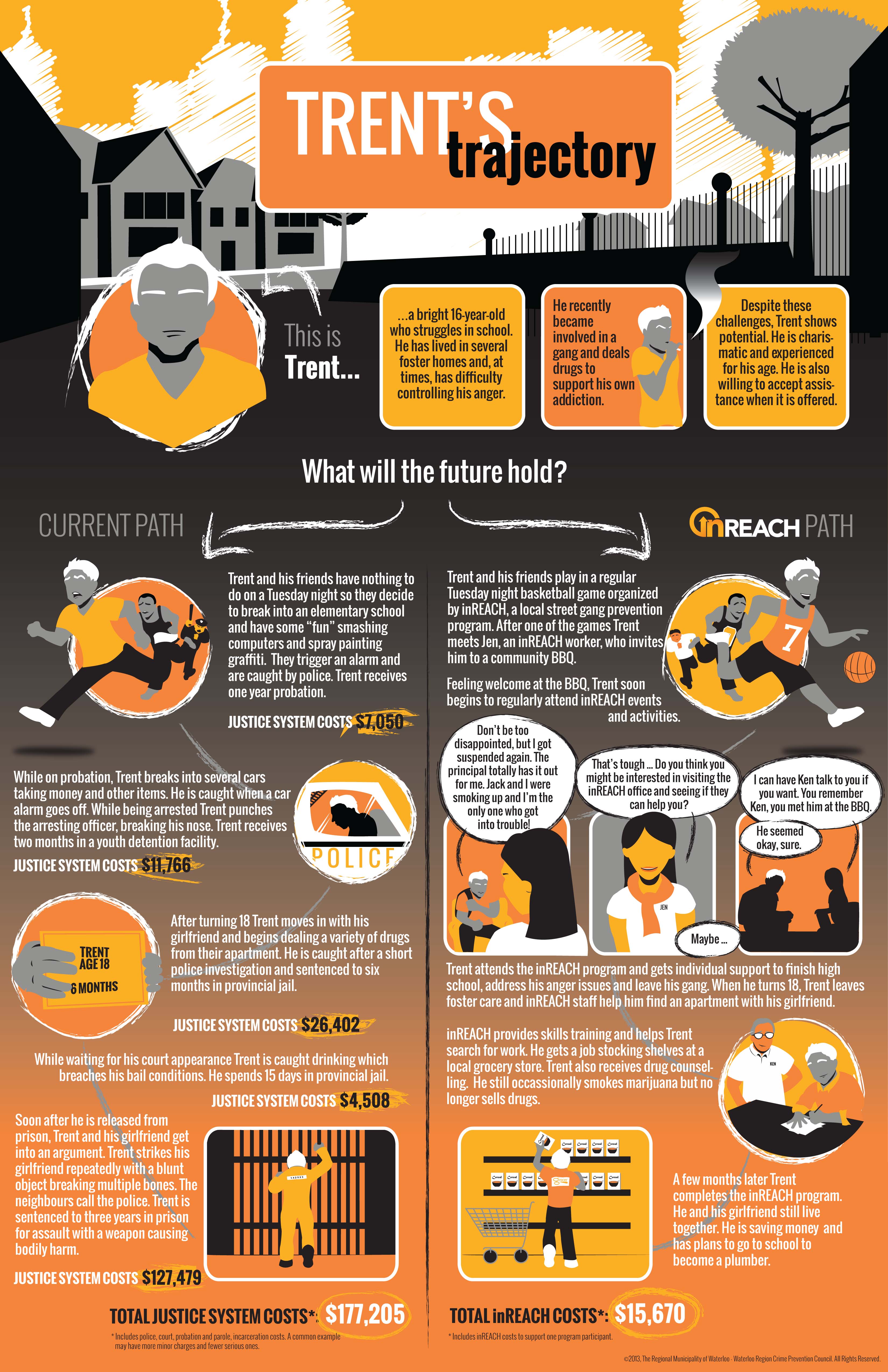
- A new story is needed – guest post by Friend of Crime Prevention, Doug McKlusky
“As a Friend of Crime Prevention, I believe that that the heart of crime prevention is through social and community development…..
Imagine neighbourhoods where everyone feels a sense of belonging, where inclusion trumps fear.
Imagine workplaces where people belong, and where respect and collaboration trump power and politics.
Imagine schools where belonging trumps bullying and streaming.”
- The new story continues…. – guest post by Friend of Crime Prevention, Doug McKlusky
“I do believe that many small actions will add up to a large action on the road to building a community of belonging. It can be as simple as acknowledging the presence of a homeless person in downtown Kitchener, they are part of our community, a friendly smile goes a long way in making a person feel like they belong. I challenge you to do something to make our community a community of belonging, smile at a stranger, volunteer somewhere in your community, it will make a difference, it will connect you!”
- Inspired by inREACH: Reflections of a youth outreach worker – Youth Outreach Worker, Krista McCann
“inREACH fostered a working environment that not only allowed us, but encouraged us to work outside of the box. I’d be lying to say the task was not daunting at first. In my previous experience working as a Youth Worker I had never been given such flexibility and confidence within a position to achieve the desired outcome; an outcome that was not based on the amount of programs ran or number of program participants but the ability to engage youth in their community.”
- Neighbourhood policing: A learning opportunity for Friends of Crime Prevention – WRCPC Student, Ryan Maharaj
“To usher in 2014, WRCPC hosted a learning event on ‘Neighbourhood Policing’. Naturally, Friends of Crime Prevention & WRCPC have a common interest with the police on all things related to crime prevention, community safety and well-being. Inspector Kevin Thaler from the Waterloo Regional Police Service was our guest to unveil the recent sweeping changes to their organizational structure, daily operations and dispatch methods. The results are what is now known as Neighbourhood Policing.”
- Between life and death: Responding to drug overdoses in Canada – former WRCPC student, Kayla Follet
This article appeared in the July 14, 2014 edition of the Waterloo Region Record.
- By the numbers: Wading through police-reported crime statistics 2013 – Anthony Piscitelli
“Statistics Canada released their annual Police-reported crime statistics 2013 report in July (and in French). There is always so much to sift through and interpret. Learn more from the Canadian Criminal Justice Association.”
- By the numbers: Hate crimes in Waterloo Region – Anthony Piscitelli
“In 2009, the Kitchener-Cambridge-Waterloo census metropolitan area (CMA) had the highest hate crime rate in Canada, according to police reported statistics. Did you catch the end of that sentence? “…..according to police reported statistics”. It might seem insignificant, but it might be the key to understanding why the 2009 hate crime rate in Waterloo Region is so high compared to other CMAs in Canada. “
- No clichés: A reflection on working with the youth of inREACH – guest post by Karl Garner
“Having been with inREACH, it became quite evident, that the youth we worked with often experienced clichés in their lives. They were labeled, stereotyped, and their behaviours were often predicted by the adult world around them, yet most of the time no one knew anything about them. Outside of where they lived, or who they hung out with, or the school they went to, or perhaps what they look like, do many even know these youth? The label which is the umbrella they live under is their cliché.”
- Ignoring what we’ve learned. Or, how to ensure street gangs become a real problem in Waterloo Region – Ryan Maharaj
“It’s easy to assume that we should apply what we’ve learned from the inREACH project to better support marginalized youth in our community. But have you every stopped to wonder, what happens if we ignore what we’ve learned? What if we shed the rose-coloured glasses and donned the shades of pessimism to see the barriers that stand in our way? What if we tried to see the glass half empty? How can we make a problem like street gangs in Waterloo Region, worse?”
- The community weighs in on the root causes of crime: change and action – Dianne Heise
“How do we get at the root causes of crime and prevent it from happening in the first place?
This isn’t a direct, straight answer, but, the Waterloo Region Crime Prevention Council believes part of the solution is to monitor the root causes of crime over time. Then we, as a community, can better understand and address the social, community and economic conditions associated with crime and victimization. Check out the Waterloo Region Crime Prevention Council’s report – A Snapshot in Time: The Root Causes of Crime in Waterloo Region to find out how we are doing in early childhood development, employment, community trust and other important indicators.”
….. and part 2 of The community weighs in on the root causes of crime: change and action
- Why communities need neighbourhood-based programming for youth – guest post by Courtney Didier, Alison Neighbourhood Community Centre
“We have worked with youth who have great dreams and aspirations for the future, but have trouble putting their vision into a workable plan. On the other side of the coin, we have worked with youth who have little to no confidence in their abilities, thus requiring a little more encouragement and a little more trial and error in determining what really gets them motivated and excited.”
- Lessons learned in a gang project – Dianne Heise and Rohan Thompson
“Gang Prevention Is…. a) addressing underlying issues, and, b) not about getting a kid to take off the bandana. We often heard – “we’ve got this kid, he’s in a gang – fix him.” So often in our case management and system navigation work, it wasn’t about getting this young person to take off his bandana or to stop hustling or whatever, we never approached the work in that fashion. But it was about the underlying issues and working on them. Mostly we were dealing with issues of poverty, untreated trauma, family breakdown, substance abuse, disengagement and lack of opportunities. These are the problems that young people and gang members and people in general are dealing with. We want to demystify that label of gang member that says their needs are different than any other groups. These same issues are the drivers behind the behaviours.”
So many great reads from 2014. But if you’re in the mood for something to watch, rather than read, might I suggest our newest video on Collaboration!
We look forward to bringing more great Smart on Crime blogs for you in 2015. Better yet, we love hearing your comments, reactions and responses to the posts and guest commentaries. We look forward to hearing more from you next year!
Posted on: June 30th, 2014 by Smart on Crime
We believe in just and humane approaches to crime and its consequences. It says so right in our organizational value statements. And we love it when we can point to other examples of people and organizations walking the talk on this value.
Insight-Out shows that personal transformation can be a powerful force for rehabilitation before punishment. In the United States, “the system profits by its own failure’, remarks Jacques Verduin, Insight-Out founder & facilitator. And he vows to change that, person by person with a year long program called GRIP.
Does society really benefit if we abandon people in prison? What does ‘ just and humane approaches to crime and its consequences’ look like to you? What does it look like in Canada?
Read a full article about Insight-Out on the Daily Good – Guidng Rage into Power.
Posted on: March 27th, 2014 by Waterloo Region Crime Prevention Council
I agree with the sayings – ‘there’s always more to learn’ and ‘it’s never too late to learn.’
I lived this out when I returned to university for a Masters degree the same year my daughter started university. Luckily she wasn’t too embarrassed to be at school with her mom. My timing turned out to be perfect for another reason as well. During my time in school I had the amazing opportunity to be involved with the research and evaluation of the innovative and highly successful gang prevention project, inREACH. I can guarantee you; I learned something new every day.
An excellent summary of the evaluation report for inREACH highlights a LOT of really important learning and accomplishments as a result of this collective community effort over the past few years. Sharing our story: Lessons learned from the inREACH experience describes how the project was implemented, the young people it served in the treatment and prevention programs, and the many positive impacts of the project on young people, neighbourhoods, organizations and the community as a whole.
 The most important lessons and understandings learned from inREACH will inspire community action toward a future where all young people feel part of a caring community and have the opportunities and the supports they need and deserve. But, any evaluation isn’t even worth the paper it’s printed on if it just sits on a shelf. We need to apply the evaluation findings so that we can affirm what might already work but also make changes where needed.
The most important lessons and understandings learned from inREACH will inspire community action toward a future where all young people feel part of a caring community and have the opportunities and the supports they need and deserve. But, any evaluation isn’t even worth the paper it’s printed on if it just sits on a shelf. We need to apply the evaluation findings so that we can affirm what might already work but also make changes where needed.
Here are 3 key things we learned from the inREACH experience that could help us more effectively engage young people who are marginalized and better address their needs.
It Works!
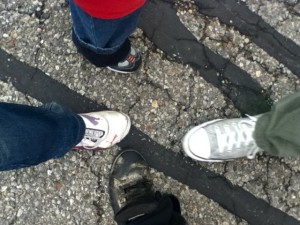 Some believe that teenagers – particularly those labelled as “trouble” – don’t want to be involved in community activities or mentoring relationships with adults. The evaluation busts that myth by demonstrating very clearly – that if organizations and communities take the right approach – then many adolescents and young adults, will participate in asset building activities like arts and sports. Many will also seek assistance for challenges they face with things like addictions, gang involvement or finding a job or a home, when they have developed a trusting relationship with an adult who meets them ‘where they’re at.’ The evaluation results also clearly demonstrated that when young people got involved in their communities and received help with life challenges, they experienced many positive benefits and changes. Over 95 % of youth agreed their involvement “helped them move in the direction in life they wanted to go.” For example, youth said:
Some believe that teenagers – particularly those labelled as “trouble” – don’t want to be involved in community activities or mentoring relationships with adults. The evaluation busts that myth by demonstrating very clearly – that if organizations and communities take the right approach – then many adolescents and young adults, will participate in asset building activities like arts and sports. Many will also seek assistance for challenges they face with things like addictions, gang involvement or finding a job or a home, when they have developed a trusting relationship with an adult who meets them ‘where they’re at.’ The evaluation results also clearly demonstrated that when young people got involved in their communities and received help with life challenges, they experienced many positive benefits and changes. Over 95 % of youth agreed their involvement “helped them move in the direction in life they wanted to go.” For example, youth said:
“they taught me to actually think before I acted…just keeping my cool overall and staying relaxed and not being so stressed out.”
“It helped me see the value of myself.”
Learning what it takes – with youth
 Sharing our Story describes key elements of the inREACH approach that was so successful. It took
Sharing our Story describes key elements of the inREACH approach that was so successful. It took
- the development of trusting relationships between staff and young people;
- listening to the youth and involving them in decision-making,
- recognizing youths’ strengths, skills, and interests, and
- making programs and services more accessible.
The evaluation report fleshes out some details of HOW to implement these approaches, which is the challenging part.
One illustration follows:
“I don’t think that they have ever had an adult say “what are your dreams?” and “how are you going to achieve those?” and then try to help them… That is my biggest question when I first meet a kid….it gets them thinking…. Then believing in them too and showing them you really care.” (Project staff)
Learning what it takes – the community’s role
inREACH was a collaborative venture of multiple organizations. The evaluation documents how these partnerships enabled organizations to work together more effectively, to work with youth in a different way, to access more services and resources and to “produce systemic change – changes in the way systems and organizations in the community approached the problem of gangs and at-risk youth.” (p 10)
Feedback to Community
It was important to report back to people who shared their thoughts and stories of involvement so I returned to many of the neighbourhood programs. Young people were keen to take the summary booklets and some were excited to see their own photographs featured there. Some youth who had been interviewed wanted the full 140 page version, partly to see if they were quoted there. There was a sense of pride for what they had created and accomplished and some commented on the huge difference the programs made in their lives.
 Continuing the Learning
Continuing the Learning
We know that if fewer adolescents and young adults experienced marginalization due to where they live or the challenges they face, then fewer young people would be attracted to gangs as a solution to their problems or to find a sense of belonging. So, it begs the question…. What should the community take forward from this youth gang prevention project?
There’s so much to talk about – outreach, social media, a youth engagement approach, new ways of collaborating across agencies, the role of neighbourhood community centres….
We look forward to working with our community to keep learning, but also move the learning to action. The upcoming event “Engaging marginalized youth” will help us do just that and you can join us on Friday April 11, 2014. Registration is required for the event and you can register here. [UPDATE: this event is now SOLD OUT. You can still register but you will be added to the wait list in case of cancelations.]
There’s always more to learn…
Photo Credits: all photos taken by inREACH youth during PhotoVoice projects. 2012
Posted on: March 25th, 2014 by Waterloo Region Crime Prevention Council

Trent’s Trajectory is fictional account of a sixteen year old teenager as he becomes an adult. The infographic, created by Wade Thompson, begins by discussing the risk and resiliency factors Trent faces. The story then branches into two paths. In the first path, Trent does not receive community supports and his risk factors drive the story culminating in a three year prison sentence. In the second path, Trent receives supports from the inREACH project. His resilience factors grow and Trent successfully transitions into adulthood.
Typical stories from the justice system and the inREACH program build Trent’s fictional story. Due to space constraints the ‘current path’ contains less minor crimes than would be expected from a repeat young offender and a few more serious ones. While this slightly changes the story, the overall justice system costs are realistic. It is important to note, while the story is specifically about the inREACH program similar outcomes can be reached for at risk youth in many other prevention programs.
Does this raise any questions for you? What do we do with this information now that inREACH has ended?
Posted on: March 19th, 2014 by Waterloo Region Crime Prevention Council

When a community project ends, such as inREACH, the street gang prevention project in Waterloo Region, it doesn’t really completely end. Sure, the office may be closed, the sign taken down, the telephones disconnected and the staff moved on to other jobs, but things have changed in the lives of youth, individuals and our community.
Even after a project ends, it is our responsibility to capture what worked well and what didn’t so we can continue to change ourselves, organizations, services, systems and ultimately our community to better engage & support marginalized youth in positive action and change.
It takes time to capture what’s been learned, how it applies, who continues the work and how we know it’s making a difference. That’s why we’re hosting:
“Engaging Marginalized Youth: Harnessing Experience from the inREACH Project”
Friday April 11, 2014
9am – 11am
Knox Presbyterian Church, 50 Erb Street West, Waterloo
Please Register if you plan to attend
To make the most of our time together that morning, we have prepared an advance blog series featuring 8 individuals who worked closely with inREACH; project staff, neighbourhoods, evaluators and community leaders. Their thoughts and reflections are sure to stimulate your ideas, – don’t hold back! – post comments and questions to the authors as the blogs are posted so we begin to think and talk about the issues now and can jump right in on April 11th.
Think of this blog series as the pre-game show, starting now.
At the event, it will be up to the community to determine and decide what actions we, the collective WE, can and must take to continue some of the work of engaging marginalized youth in our community.
Please comment, share, tweet, Facebook and reblog this series to help spread the word and share the learning.
Posted on: March 10th, 2014 by Smart on Crime
When United States Attorney General Eric Holder made gave his “Smart on Crime” remarks to the American Bar Association’s Annual Convention in San Francisco on August 12, 2013, it “launched a comprehensive review of the criminal justice system in order to identify reforms that would ensure federal laws are enforced more fairly and—in an era of reduced budgets—more efficiently”.
If you’ve been following the ‘smart on crime’ news from the United States since then, it appears they are leaving few stones unturned. In the case of mandatory minimum sentencing for drug offenses, there seems to be a lot of evidenced-based research to support their justice reform directions.
As an example, take a look at these Federal Bureau of Prisons infographic charts in a recent Huffington Post article on the impact of prison overcrowding:
U.S. Prison Population As Of Jan. 25, 2014
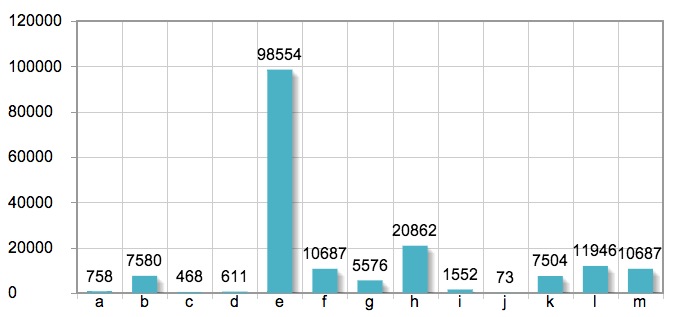
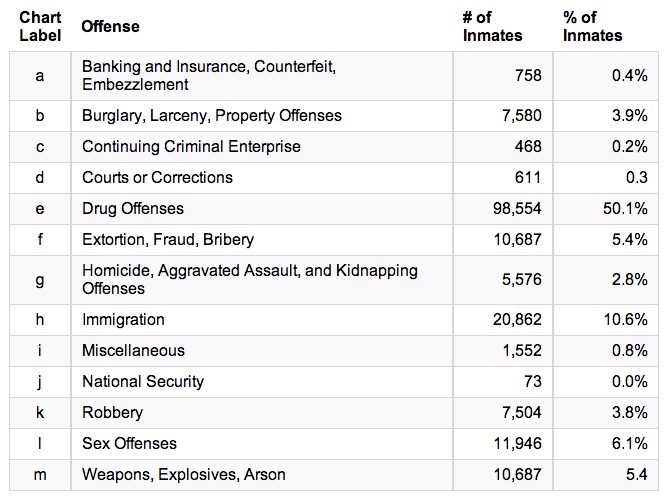
Data is limited due to the availability of offense-specific information.
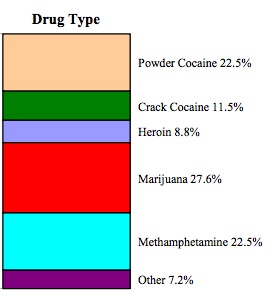
See the full article here.
Posted on: January 17th, 2014 by Smart on Crime
Several times a year the network of Friends of Crime Prevention gathers for a learning and collaboration event hosted by the Waterloo Region Crime Prevention Council (WRCPC).
To usher in 2014, WRCPC hosted a learning event on ‘Neighbourhood Policing’. Naturally, Friends of Crime Prevention & WRCPC have a common interest with the police on all things related to crime prevention, community safety and well-being. Inspector Kevin Thaler from the Waterloo Regional Police Service was our guest to unveil the recent sweeping changes to their organizational structure, daily operations and dispatch methods. The results are what is now known as Neighbourhood Policing. You can find Inspector Thaler’s speaking notes here.
Inspector Thaler covered:
- the shift from traditional reactive policing to proactive, responsive policing that took well over 5 years to implement
- how WRPS used police data and research to reorganize and realign their policing operation and strategies to a neighbourhood policing model
- how the shift to neighbourhood policing allows police officers to have more time for connecting with people in neighbourhoods and communities
- the implementation of the new ‘Online Crime Reporting System’
- new opportunities for patrol officers to have a more engaged and lasting relationship with regional elementary and high schools
It wouldn’t be a Friends of Crime Prevention event without a good discussion. There were a number of insightful and important questions for discussion but we’d like to highlight these four as food for thought and your further comment.
Q. How can the WRPS and Crime Prevention Council establish relationships with school representatives, staff, parents, and young children, when officers are frequently changing and there has been no routine presence of individual officers?
With this new model of an estimated 40% downtime officers are given the opportunity to align with schools if they are willing to accept the long-term responsibility and if they have a direct interest in working with the schools. By allowing officers to make the decision only those who have the motivation and interest will take on the role with all of its responsibilities. The increase in downtime will also allow for more opportunities to meet with the school and the individuals within.
Q. This new dispatching method increases police presence in areas that have higher crime occurrence rates (see www.wrps.on.ca under the ‘Maps’ tab). When does police presence become harmful and insight fear?
While WRPS is currently doing research on the costs/benefits of higher police presence, officers are combating this issue by attempting to foster better relationships with the citizens in these particular communities. Rather than simply cruising or patrolling in these communities, officers are stopping to talk about more than just crime reduction. Educating and being educated, informing and being informed are all major aspects of an officer’s role.
Q. What has been the response to the new online reporting program?
Growing numbers of anecdotal evidence supporting online reporting and marketing strategies are being used to bring the online reporting system to the attention of the general populace. The program offers citizens an opportunity to report minor crimes without having to call 911 numbers. This helps officers track and manage minor crimes while reducing the overall number of line calls.
Q. Only 17% all 911 calls are for dangerous and immediately threatening crimes (as defined on the WRPS website under the ‘Staying Safe’ tab). Therefore 83% are for peacekeeping, social disorder related issues which could be dealt with by either the non-emergency line 519- 653-7700 or online reporting. How can we help the general public become more educated in regards to how to contact the police and defuse this 83% to more effective means of reporting?
This question was brought up at the end of the discussion time and prompted a great deal of input for the fact that a large number of police resources go into dealing with things that don’t need police response or intervention.
What do you think? What changes would you suggest to ensure that police are able to focus on what matters most, in an efficient manner? Share your suggestions in the comments below or join the WRCPC meeting on March 21 where we will have a follow up discussion on the future of policing. We would love to hear your thoughts!
Summary by Ryan Maharaj, MSW Student with WRCPC. Ryan recently moved to Waterloo in pursuit of his Masters in Social Work at Laurier University. Placed at the Crime Prevention Council, he has been given the opportunity to explore the role of male allies in the movement against sexual and intimate partner violence. He firmly believes that with respect, support, compassion, and education we can prevent the occurrences of sexual violence in the next generation.
Posted on: December 31st, 2013 by Waterloo Region Crime Prevention Council
I just love this time of January when you get to take a look back at what’s been accomplished over the past year, ponder what worked well and scratch your head about what emerged that you never expected.
As we turn the page into 2014, I also love the tradition of digging into our blog to find what you, the readers, found most interesting over the last year. With over 45 blog posts in 2013, there was certainly something for everyone. We had 23 different guest bloggers contribute community responses on the root causes of crime as part of the Snapshot in Time: Root Causes of Crime in Waterloo Region. You can find all the posts and community responses in one tidy corner of the blog.
But, our readers are diverse which indicates why our most popular blogs on Smart on Crime ranged from book reviews to casinos and from guest commentary to provincial budget analysis. Here’s the round up of our top 13 posts from 2013.
1. The local impact of youth unemployment/underemployment – guest post by Carol Simpson
“If youth in the labour market cannot find employment, they find it increasingly difficult to become established in the “adult” world. They have done nothing wrong. They have done what they were told to do and were supposed to do yet cannot find that suitable connection to the workforce. This impacts their confidence and their ability to “fit in”. Many have chosen to give up and have simply walked away from the labour market making it even harder to find their “place” in the world. This results in frustration and anger and they feel neglected.”
2. What we’re reading: Rescuing Policy – by Anthony Piscitelli
“How can government solve the complex issues facing society?”
3. Children in care in Waterloo Region: Compounding risk for vulnerable children – by Jill Stoddart
“Children living in the care of the child welfare system have a higher likelihood of justice system involvement in comparison to children living with their biological parents”.
4. Excuse me Waterloo Region, your homelessness is showing – by Lynn Macaulay
“I feel part of a sector where I join in solidarity with people experiencing homelessness and many community members who together stand up to say – people who are homeless matter. We collectively are committed to ending homelessness in Waterloo Region. This is a lofty goal, which will take much persistence and hard work, but with the determination and skills of this community, I believe it is possible.”
5. Income of low income families: Root cause of crime in Waterloo Region – by Anthony Piscitelli
Neighbourhoods that are at an economic disadvantage when compared to other areas report higher crime rates. In addition, societies where wealth is concentrated amongst a small group of individuals report higher crime rates.
6. Through the eyes of crime prevention: Ontario 2013 Budget – prepared by Alexadra Kraushaar

7. The day I went to prison – by Andrew Jackson
“Five minutes later I stood at the front of a classroom with 25 women waiting for me to start talking. “Good morning” I said. “Good morning.” came the reply from the women of Grand Valley Institution for Women (GVI).”
8. Knowing other people care: The importance of community to women who have experienced homelessness – by Elizabeth Clarke
“It goes almost without saying that the overarching cause of homelessness is poverty, but not all people who are poor become homeless. Not all people who become homeless stay that way for long.”
9. Waterloo Region’s Catholic Schools: Laying a solid foundation for student success – by David DeSantis
“It is no surprise that the length of involvement in schooling significantly impacts participation in criminal activity and the probability of incarceration, as found in Snapshot in Time: Root Causes of Crime in Waterloo Region. In fact, this has been well-known in the education sector for many years – which explains the great lengths to which school boards go in mitigating against this problem.”
10. 7 things we learned from Alan Quarry about social media for social change – by Juanita Metzger
“Creating change that lasts happens in relationships, from one person to another, and these days, often facilitated with the power of social media. Here are Alan’s 7 best thoughts on the principles for engaging people in change.”
11. A Snapshot in Time: The Root Causes of Crime in Waterloo Region – by Anthony Piscitelli
“The Waterloo Region Crime Prevention Council believes monitoring the root causes of crime can aid the community in addressing crime, victimization and fear of crime through awareness, discussion, leadership and action. Once the root causes are understood more clearly, resources can be applied to areas where the community is doing poorly. A Snapshot in Time: The Root Causes of Crime in Waterloo Region identifies the root causes of crime right here in Waterloo Region and provides a tool to aid local policy makers in targeting interventions to where they are most needed and where they can have the greatest impact.”
12. Poverty in Waterloo Region… Is that REALLY OK with you? – by Mary MacKeigan
“The data in the section of Root Causes of Crime in Waterloo Region titled Income of Low Income Families is no surprise to those of us who are familiar with poverty-related issues in our regional community. In fact, in Waterloo Region, 36 earners make more than $2.57M; 360 make more than $685K; 3,610 (the top 1%) make more than $396K. Individuals who make more than $81,200 are in the top 10%. On the other hand, the median income of the bottom 50% is $14,100!* In 2007, one third of employed individuals were earning $14.00/hour or less. This is poor – it may not be deep (or absolute) poverty, but it is precariously close to it. “
13. What are the odds? The vulnerable child of today as the problem gambler of tomorrow – by Chris Sadeler
“The official position statement of the Waterloo Region Crime Prevention Council given at a public consultation on the question of a casino in the City of Kitchener. The remarks were given by WRCPC Executive Director, Christiane Sadeler on behalf of the Waterloo Region Crime Prevention Council.”
So many great reads from 2013. But if you’re in the mood for something to watch, rather than read, might I suggest our personal favourite, “Won’t you be my neighbour?” Who can resist Anthony Piscitelli’s homage to Mr. Rogers!
We look forward to bringing more great smart on crime blogs for you to ponder. Better yet, we love hearing your comments, reactions and responses to the posts and guest commentaries. We look forward to hearing more from you in 2014!
Posted on: November 6th, 2012 by Waterloo Region Crime Prevention Council

It’s Crime Prevention Week in Ontario. Every November, community agencies, organizations, police departments, municipalities and citizens come together to raise awareness of crime prevention as a building block for creating vibrant, dynamic, safe and healthy communities. “Engaged communities are safer communities” is this year’s theme! We couldn’t agree more!
Your average neighbourhood superhero can make a difference every day with actions small and large. Watch our Twitter and Facebook pages this week where we’ll be posting tips and sharing ways that you can get engaged and be a friend of crime prevention in your home, neighbourhood, workplace, faith community, school, team, youth group….. you name it.
How do you engage in your community? What do you see others doing? Do you see a gap where some one should engage?
Love to hear from you – we know you are out there doing amazing things to create safer communities.


 The most important lessons and understandings learned from inREACH will inspire community action toward a future where all young people feel part of a caring community and have the opportunities and the supports they need and deserve. But, any evaluation isn’t even worth the paper it’s printed on if it just sits on a shelf. We need to apply the evaluation findings so that we can affirm what might already work but also make changes where needed.
The most important lessons and understandings learned from inREACH will inspire community action toward a future where all young people feel part of a caring community and have the opportunities and the supports they need and deserve. But, any evaluation isn’t even worth the paper it’s printed on if it just sits on a shelf. We need to apply the evaluation findings so that we can affirm what might already work but also make changes where needed. Some believe that teenagers – particularly those labelled as “trouble” – don’t want to be involved in community activities or mentoring relationships with adults. The evaluation busts that myth by demonstrating very clearly – that if organizations and communities take the right approach – then many adolescents and young adults, will participate in asset building activities like arts and sports. Many will also seek assistance for challenges they face with things like addictions, gang involvement or finding a job or a home, when they have developed a trusting relationship with an adult who meets them ‘where they’re at.’ The evaluation results also clearly demonstrated that when young people got involved in their communities and received help with life challenges, they experienced many positive benefits and changes. Over 95 % of youth agreed their involvement “helped them move in the direction in life they wanted to go.” For example, youth said:
Some believe that teenagers – particularly those labelled as “trouble” – don’t want to be involved in community activities or mentoring relationships with adults. The evaluation busts that myth by demonstrating very clearly – that if organizations and communities take the right approach – then many adolescents and young adults, will participate in asset building activities like arts and sports. Many will also seek assistance for challenges they face with things like addictions, gang involvement or finding a job or a home, when they have developed a trusting relationship with an adult who meets them ‘where they’re at.’ The evaluation results also clearly demonstrated that when young people got involved in their communities and received help with life challenges, they experienced many positive benefits and changes. Over 95 % of youth agreed their involvement “helped them move in the direction in life they wanted to go.” For example, youth said: Sharing our Story describes key elements of the inREACH approach that was so successful. It took
Sharing our Story describes key elements of the inREACH approach that was so successful. It took Continuing the Learning
Continuing the Learning




